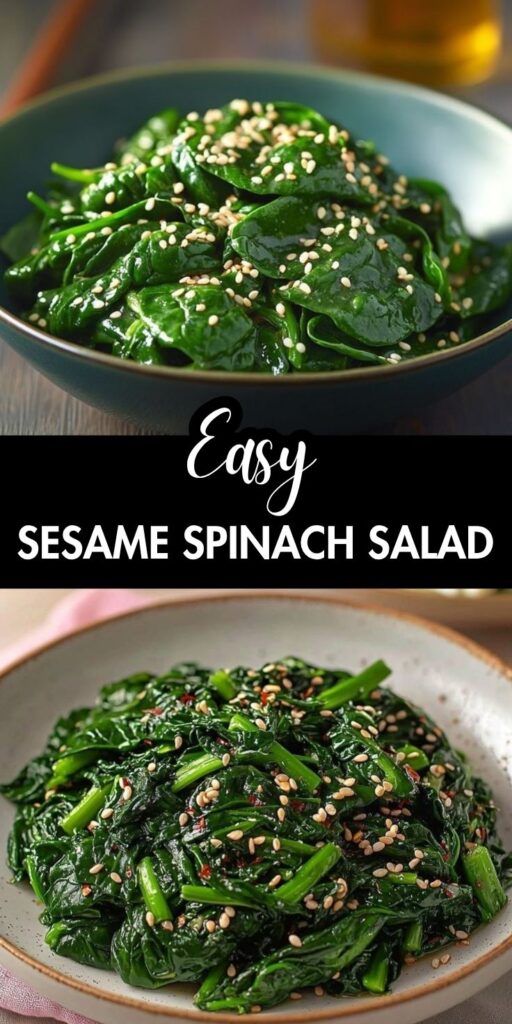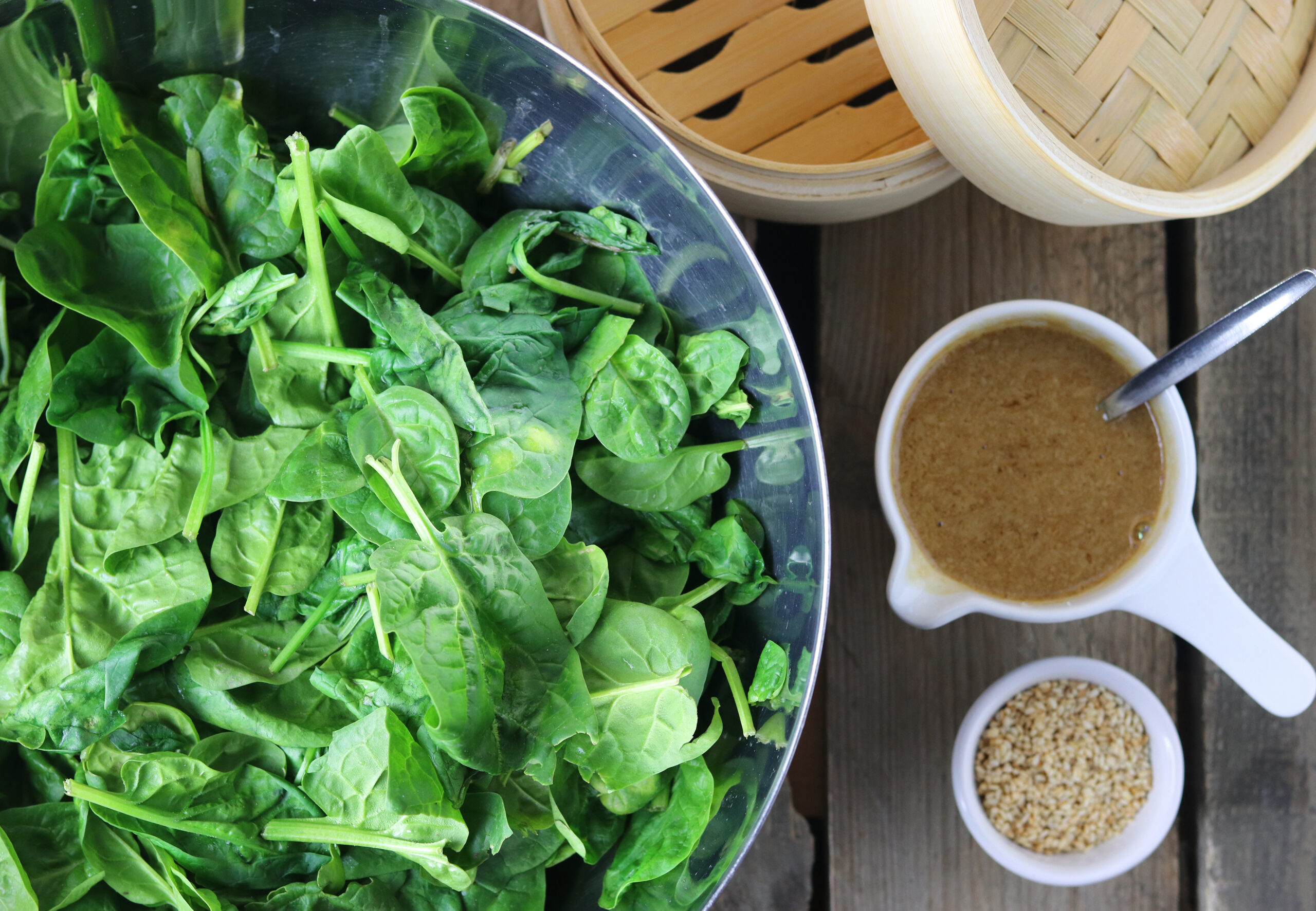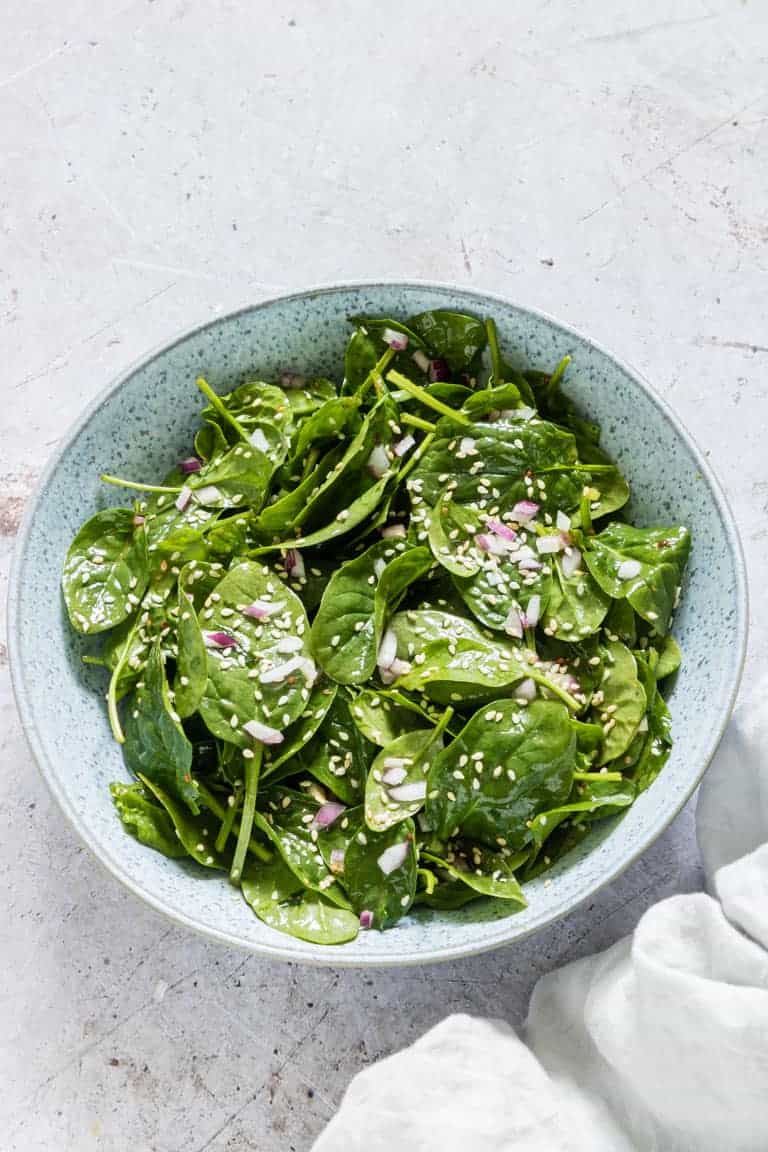Note
Sesame Spinach Salad is a fresh, light, and flavorful dish that blends tender spinach leaves with the rich nuttiness of sesame oil, the umami of soy sauce, and sometimes a hint of sweetness or spice.
It’s a staple in Korean and Japanese cuisines (known as Sigeumchi Namul in Korea), but it's easily adaptable for Western and fusion dishes.
Whether you're serving it as a side, appetizer, or light main course, there are several ways to elevate this salad into something memorable.
Tip 1: Use Baby Spinach or Blanched Mature Spinach
For the best texture and taste:
- Baby spinach is delicate and ideal for raw salads.
- Mature spinach should be lightly blanched for 30–60 seconds, just until wilted. Then, rinse in cold water and squeeze out excess moisture before tossing with dressing. This removes bitterness and enhances the salad's flavor absorption.
Pro trick: After blanching, roll the spinach in a kitchen towel to extract excess water—this prevents soggy salad and watery dressing.
Tip 2: Balance the Dressing
The classic sesame dressing is made from:
- Toasted sesame oil
- Soy sauce
- Rice vinegar or lemon juice
- Sugar or honey (optional)
- Minced garlic
- Toasted sesame seeds
Make sure the dressing is well balanced: slightly salty, nutty, with just enough acidity and sweetness. Whisk thoroughly before adding to the spinach.
Bonus tip: Toast your sesame seeds fresh in a dry pan. They become fragrant and crunchy—infinitely better than pre-packaged ones.
Tip 3: Toss Just Before Serving
To keep the salad fresh and vibrant, toss the spinach with the dressing just before serving. If you prep in advance, store the dressing separately and combine only when ready to eat.
Trick: If packing for lunch or a picnic, layer the salad in a jar: sesame dressing on the bottom, then heavier veggies (like carrots or edamame), and spinach on top. Shake when ready to eat.
Tip 4: Add Crunch and Color
While traditional sesame spinach salad is simple, you can easily customize it:
- Add shredded carrots, red bell peppers, or cucumbers for color and crunch.
- Toss in toasted almonds, peanuts, or crunchy wonton strips for added texture.
- A sprinkle of chili flakes or gochugaru gives a subtle kick without overpowering the flavors.
Tip 5: Use it as a Base or Side
This salad shines on its own but works beautifully in larger dishes:
- Serve it with grilled chicken, tofu, or salmon for a light, healthy meal.
- Add to a rice or noodle bowl for an Asian-inspired grain salad.
- Pair with Korean BBQ, dumplings, sushi, or even roasted meats as a refreshing contrast.
Trick: Serve in small ramekins as a banchan (Korean side dish) for an authentic touch.
Tip 6: Elevate with Garnishes
A simple salad becomes impressive with the right garnish:
- A drizzle of yuzu or ponzu sauce
- Pickled ginger or thinly sliced scallions
- A sprinkle of furikake or nori flakes for umami boost
Presentation matters—plate it high in a small bowl or use chopsticks to layer it artfully.
Servings & Storage Tips
- Servings: This recipe serves 2 as a main or 4 as a side dish.
- Storage: Keep undressed spinach in an airtight container for up to 3 days. Once dressed, eat within a few hours, as the leaves wilt quickly.
- Make Ahead: The dressing can be made and stored for up to a week in the fridge.
Serving Suggestions
This salad is incredibly versatile and can be served in many ways:
- As a side dish: Serve it alongside grilled salmon, teriyaki chicken, or tofu.
- As a main course: Top it with sliced grilled chicken, boiled eggs, tofu, or tempeh for a protein boost.
- In a grain bowl: Combine it with cooked quinoa, brown rice, or soba noodles for a hearty meal.
- With Asian meals: It pairs perfectly with dumplings, stir-fries, or sushi.
Variations & Add-ins
- Add mushrooms: Lightly sautéed shiitake or enoki mushrooms add umami depth.
- Use baby kale or arugula: For a peppery twist, swap out spinach or mix it with other greens.
- Sweet elements: Add sliced pears, mandarins, or dried cranberries for a sweet-savory balance.
- Crunchy toppings: Try crispy wonton strips or sunflower seeds instead of nuts.
- Seaweed flakes: Sprinkle crushed nori or furikake seasoning for a Japanese touch.
Nutritional Highlights
- Spinach is rich in iron, folate, vitamin A, and vitamin C. It’s low in calories and high in antioxidants.
- Sesame oil and seeds provide heart-healthy fats and a dose of calcium and magnesium.
- Ginger and garlic not only add flavor but also have anti-inflammatory and digestive benefits.
- This salad is naturally vegetarian, and with a couple of swaps (tamari for soy sauce, maple syrup for honey), it can be made vegan and gluten-free.
Storage & Make-Ahead Tips
- Dressing: Can be made 3–4 days ahead and stored in the fridge in a sealed jar.
- Salad: Best tossed right before serving. Once dressed, spinach can wilt quickly, so only mix what you plan to eat.
- Meal Prep: Store dressing and spinach separately, and toss when ready to eat. Perfect for work lunches!
Final Notes
Sesame Spinach Salad is more than just a healthy side—it’s a refreshing, bold-flavored dish that brings together simplicity and elegance. Whether you’re looking to balance a rich main course or just enjoy a light, plant-forward meal, this salad delivers every time. Feel free to experiment with variations and toppings that suit your taste or pantry. Once you try it, it’s sure to become a staple in your salad rotation.


 Wash the spinach thoroughly and dry it using a salad spinner or kitchen towels. Fresh baby spinach is ideal for its tender texture and mild flavor. If you’re using mature spinach, remove any tough stems and chop the leaves into bite-sized pieces.
Wash the spinach thoroughly and dry it using a salad spinner or kitchen towels. Fresh baby spinach is ideal for its tender texture and mild flavor. If you’re using mature spinach, remove any tough stems and chop the leaves into bite-sized pieces. Sprinkle the toasted sesame seeds on top right before serving. If using, add chopped peanuts or almonds for extra crunch and texture.
Sprinkle the toasted sesame seeds on top right before serving. If using, add chopped peanuts or almonds for extra crunch and texture.

